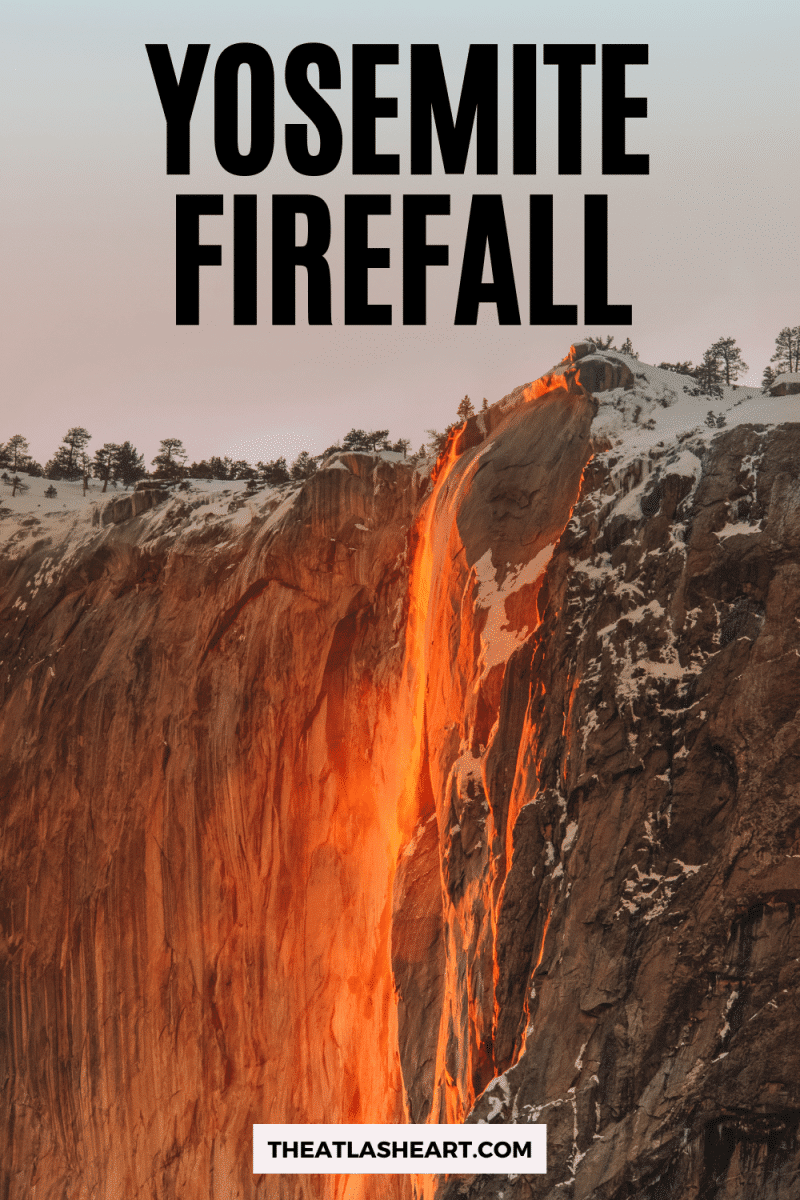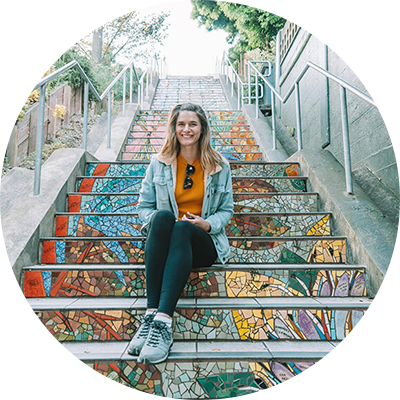Learn everything you need to know about experiencing the unique and beautiful Yosemite Firefall.
Have you ever seen what looks like a river of molten lava flow over the edge of a 2,000-foot cliff during sunset?
Do you want to see such a phenomenon take place? If so, clear your calendar in late February for the Yosemite Firefall.
When the conditions are right in Yosemite National Park, the setting sun shines on an ephemeral waterfall called Horsetail Falls.
The sun lights it up like molten lava to create one of the most spectacular natural wonders in the world.
Oh, and another draw? The Firefall waterfall flows over the famous El Capitan, which has recently been made famous by rock climbers like Alex Honnold (who climbed to the top without ropes!).
Read through for our ultimate guide on how to experience this magical Yosemite phenomenon, including when to see it, where to park, and some tips on how to take the best photos.
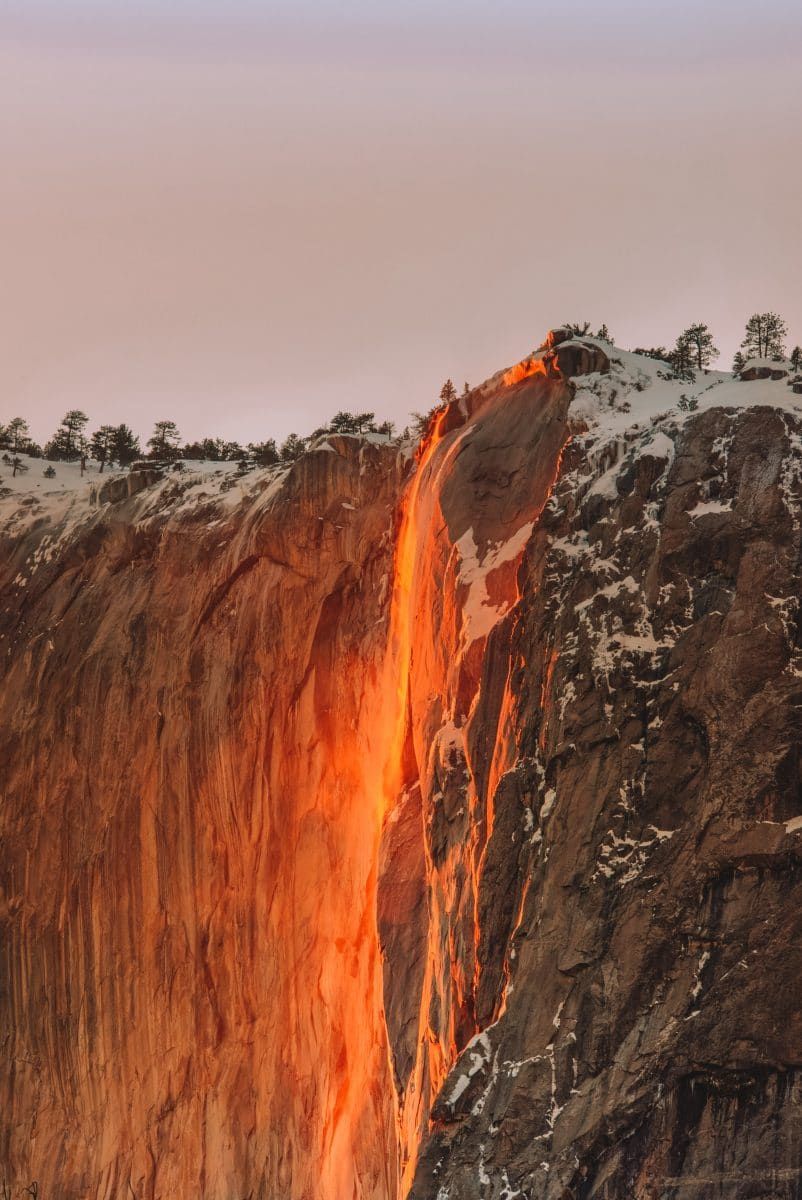
History of the Yosemite Firefall
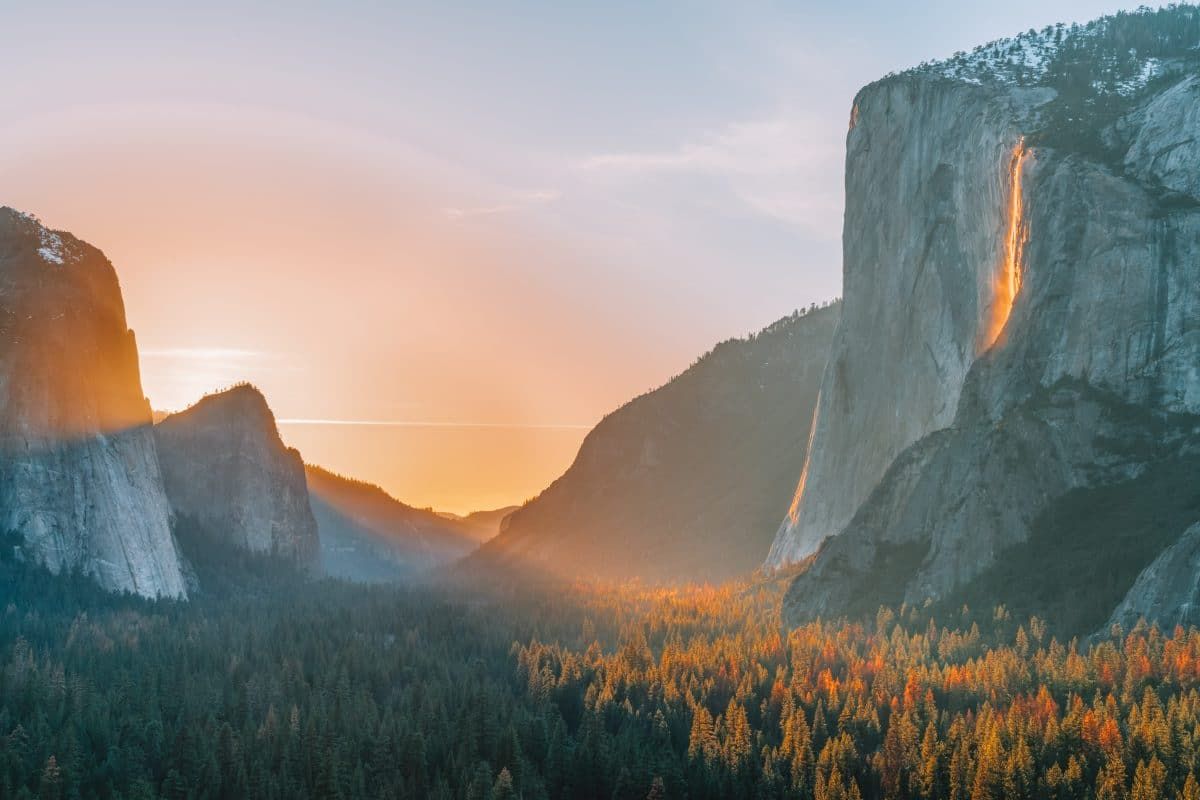
The original Yosemite Firefall was an unnatural tourist attraction started in 1872 by James McCauley, who owned a hotel on the edge of Glacier Point.
McCauley would build a bonfire for his guests and at the end of the night extinguish the embers by pushing them over the edge of the cliff into Yosemite valley.
Guests staying in the valley would see the tumbling embers, resembling a molten lava cascade, and began asking McCauley and his sons to recreate the spectacle on a nightly basis.
Thus, the fire waterfall at Yosemite was born.
McCauley’s sons would collect donations for firewood and began stoking larger and larger bonfires at the edge of the cliff.
Time and misfortune saw McCauley’s business draw to a close in 1897, but the spectacle of the Firefall was too popular and too profitable to die out completely.
Along with his wife, David Curry ran Camp Curry located at the base of Glacier Point in the early days of Yosemite National Park.
The Currys continued the Firefall tradition, beginning at 9 pm sharp every night. They also included the ceremonial call and response between Camp Curry and Glacier Point, which ended with “Let the fire fall!”
There was a short hiatus during World War II, but, otherwise, the fire fell every night from 1917 until 1968.
By the 1960s, park officials with the national park service determined the practice was harming the environment in a multitude of ways.
In 1972, the landscape photographer Galen Rowell took a photo of the natural Firefall on El Capitan, spawning what we know today as the Yosemite Firefall.
Check out this video made by Yosemite National Park on the history of the Firefall, both the natural phenomenon on El Capitan and the long-gone tradition using actual fire.
Get your FREE California Travel Planner – including printable checklists and my favorite two-week itinerary for the state.
What Causes the Firefall in Yosemite?
Yosemite’s Firefall is truly a unique natural illusion.
Today’s Firefall phenomenon is caused when the setting sun hits Horsetail Falls at just the right angle, causing the water to appear golden orange.
The sun only hits El Capitan in the right place in mid to late February, as North America transitions from winter to early spring.
Where & When Does the Firefall Happen in Yosemite National Park?
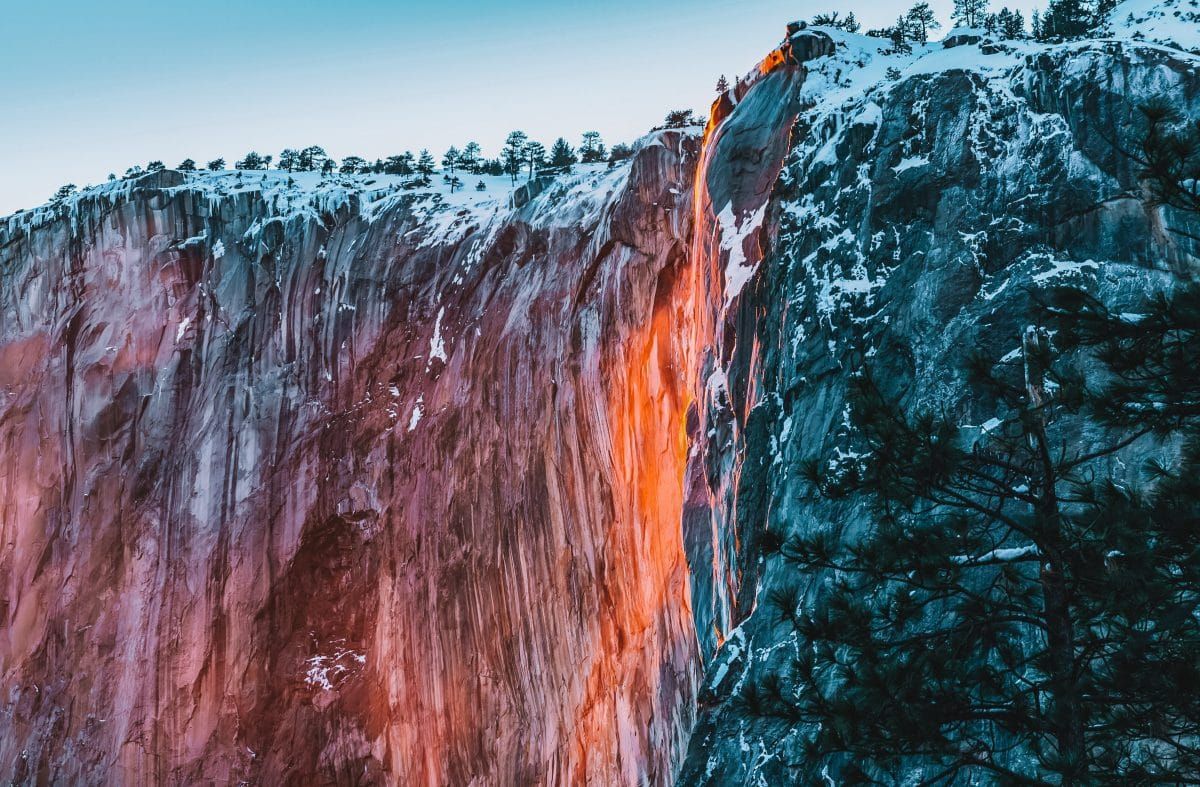
If Firefall happens, it will occur at sundown for about two weeks in mid to late February.
The peak of Firefall is usually around February 21st, but lots of factors can make this a hit-or-miss date to see the event.
Since Firefall is a natural phenomenon, Yosemite National Park can’t guarantee it’ll happen every year. The exact right conditions must be in place for the waterfall to be flowing and glowing.
The glowing waterfall is only seen on Horsetail Falls, an ephemeral waterfall, meaning it doesn’t flow all year.
Basically, if enough snow fell in the drainage above Horsetail Falls, and it warms up enough in February, the falls will flow, and you’ll have the makings of a lava waterfall in Yosemite.
In addition to needing the right amount of moisture though, the western sky must be perfectly clear for the sun to hit the water at just the right angle.
If the weather doesn’t cooperate just right, it’s possible to go years without a proper Yosemite Firefall.
The best place for information on this year’s Firefall is the National Park Service website.
Looking for other things to do in Yosemite? Read our two days in Yosemite itinerary.
Best Viewpoints to See Yosemite’s Firefall
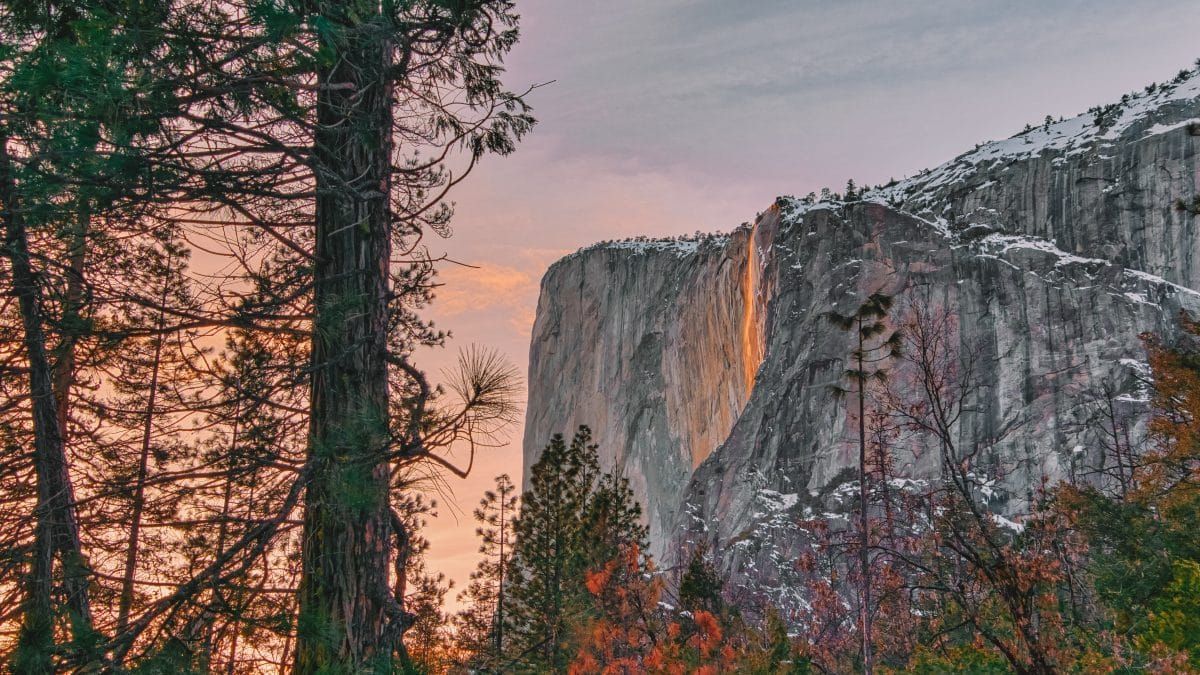
Once you’re in the valley, the Yosemite Firefall location won’t be too hard to find.
The best areas to see the lava waterfall in Yosemite are El Capitan Picnic Area and some pullouts along Southside Drive in Yosemite Valley.
The event has grown tremendously popular in recent years, so expect large crowds in the choicest locations and special park closures for areas that the public can’t access.
Where to Park to for Yosemite’s Firefall
One of the best places to park to watch the Firefall is the Yosemite Valley Lodge, located directly across from Yosemite Falls.
Don’t confuse Yosemite Falls with Horsetail Falls! You’ll have to walk west from Yosemite Valley Lodge to see the Firefall (just follow the crowds of people).
El Capitan Crossover, which links Northside Drive and Southside Drive, is also open for parking but is much more limited than the Yosemite Valley Lodge.
El Capitan Picnic Area is only open for disabled parking and is located on Northside Drive.
Read our guide on how to get from San Francisco to Yosemite.
Photography Tips for Capturing the Yosemite Firefall
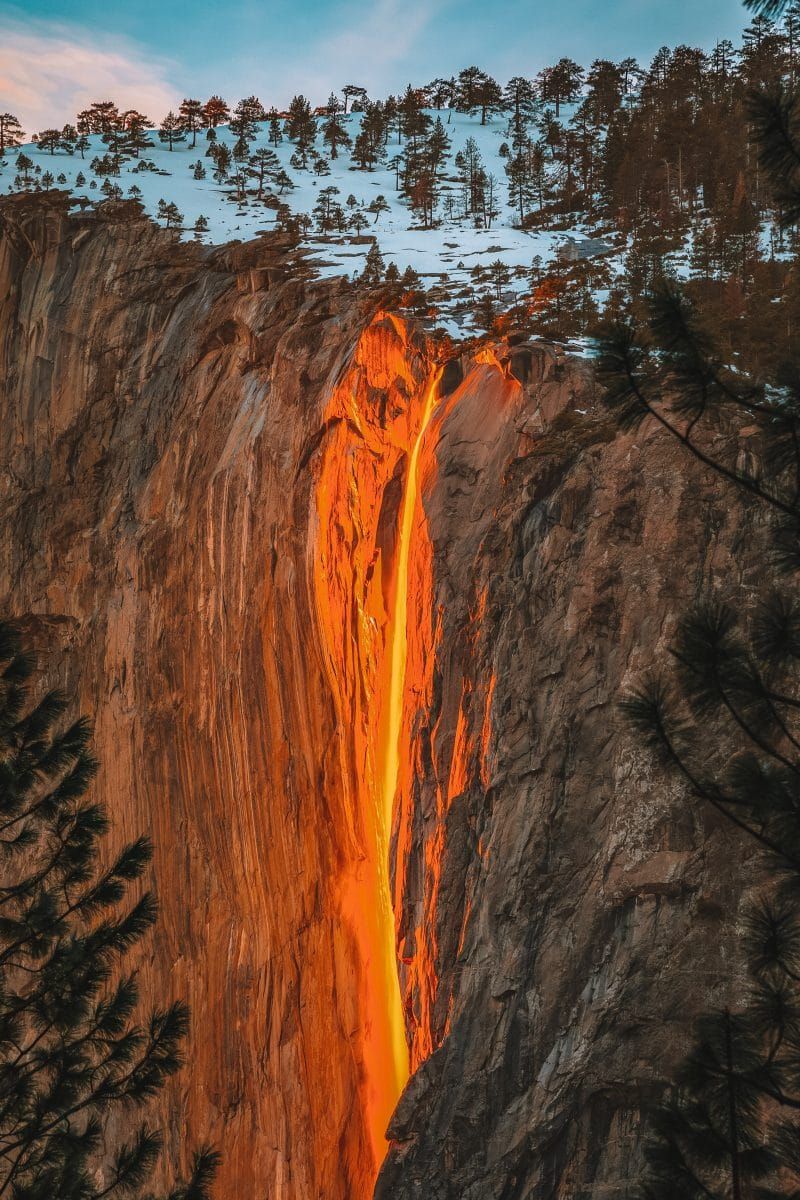
Taking epic Yosemite Firefall photos is a once-in-a-lifetime opportunity. Make sure you know these few basic photography hacks to ensure you make the most of your experience.
Use a Tripod to Shoot with Low ISO
I recommend bringing a tripod for two reasons. First, to secure a good location to see the Firefall, you should go early to stake out a spot and set up what you need.
The actual Firefall event takes place as the sun sets, so there will usually be about 30 minutes where the water turns from yellow to gold to orange, and you may want to capture it all.
Who wants to hold a camera for that long?
Also, using low ISO in combination with a tripod generally results in better quality photos with less grain.
Shoot in RAW
Shooting in RAW was one of the first pieces of advice I ever found when learning digital photography.
RAW photos simply have more detail and better color (and just better quality) than JPEG photos, which are processed by your camera and made into smaller file sizes.
Choose the Right Shutter Speed
Choose a shutter speed between 1-3 seconds long. Horsetail Falls is a small waterfall that doesn’t flow very quickly.
All the same, very slow shutter speeds may blur the water, and you’ll lose the sense of movement.
Shoot in Bursts
There are so many magical moments during a good Firefall. Capture all of them by shooting in bursts, which takes a ton of photos milliseconds from one another.
Try Different Angles
There are several excellent locations to capture that golden waterfall in Yosemite.
If you have the opportunity to stay in the park for several days, you should try picking a slightly different vantage point each day.
Even if you’re only there for one day, you will likely have a few minutes to maneuver to a new location for a slightly different angle.
Overall Tips for Experiencing the Yosemite Firefall
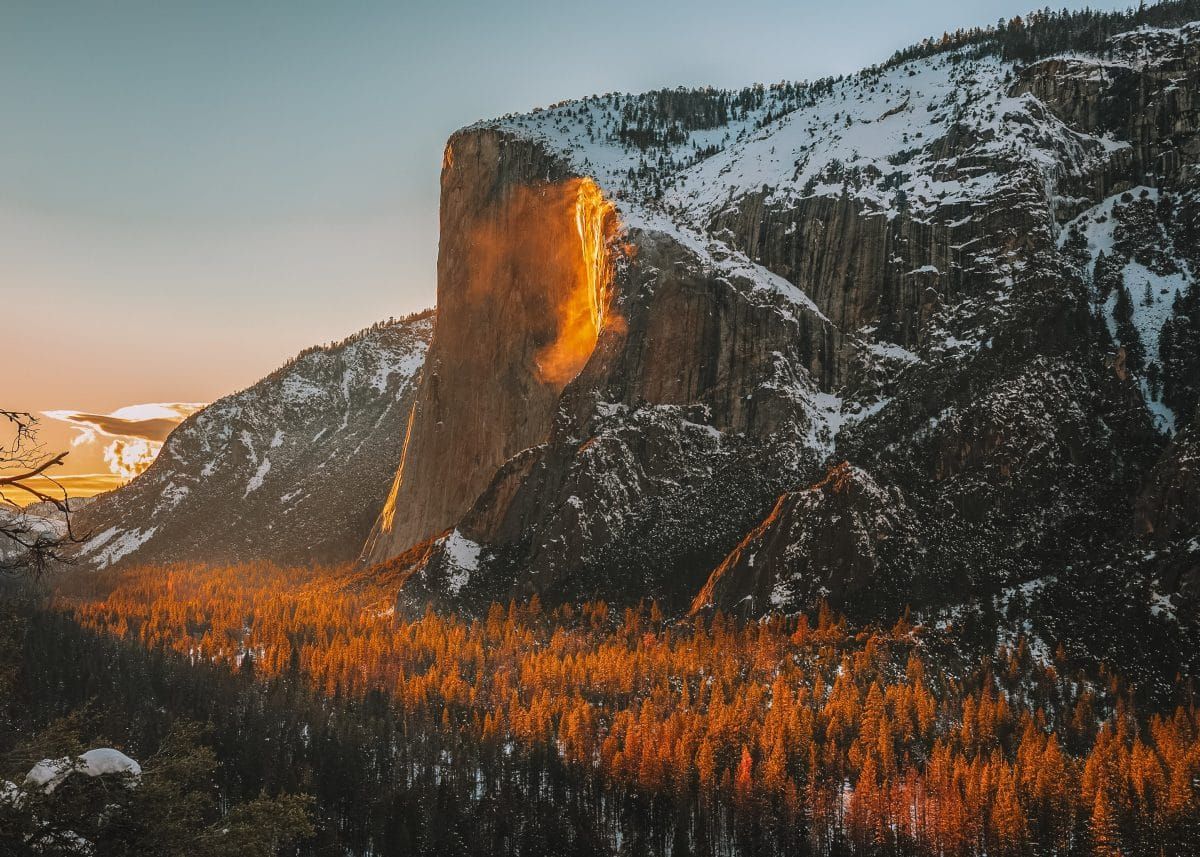
Watch The Park Service Website for Updates
The best source of information about this year’s Firefall is the Yosemite website or Instagram page.
Know that in 2021 the park instituted a reservation system during Yosemite’s Firefall to help manage crowds.
It’s undetermined whether a similar system will be in place this year, so keep an eye out to make sure you can get your spot saved!
The park website will also have information on whether the conditions are right for Firefall to happen.
Expect Large Crowds and Traffic
Firefall is not the time to visit Yosemite Valley and expect peace and quiet.
Firefall is such a big attraction that the park has to put special traffic patterns in place.
In recent years, you’ll see footage on Instagram of Firefall that shows an endless sea of people with tripods, crowded together near the clearest viewing spots.
Also, note that as this is a natural phenomenon that was “discovered” in the last few decades, the park wasn’t designed to accommodate the sheer volume of traffic.
Because of this, the park sometimes lacks adequate parking to handle this event.
Go Early
If the forecast calls for a clear sky and the falls are flowing, I highly recommend staking out your viewing location early, several hours before the sun sets.
Going early will also give you a chance to get a good look at the different angles before the crowds arrive.
You may even get a chance to chat up past Firefall attendees to see what their thoughts are on the best location.
Bring Extra Layers and Be Prepared To Walk
Late February in Yosemite National Park can be very cold and, additionally, the sun sets quickly behind the high cliffs of Yosemite Valley.
This makes the park extra chilly this time of year, so be sure to bring warm clothes plus a blanket and a chair.
If it’s raining or snowing, the setting sun won’t reach Horsetail Falls, but you should bring snow and rain layers just in case an afternoon squall comes through.
Additionally, it’s 1.5 miles each way from Yosemite Valley Lodge to the El Capitan Picnic Area,, so bring your hiking boots and wool hiking socks.
Carefully Obey Traffic Signs
Even if you’ve been to Yosemite many times, the traffic pattern will likely change during Firefall to accommodate the large crowds of people gathered on Northside Drive.
Drive slowly and watch for new signs in Yosemite valley.
How to Visit the Yosemite Firefall Responsibly
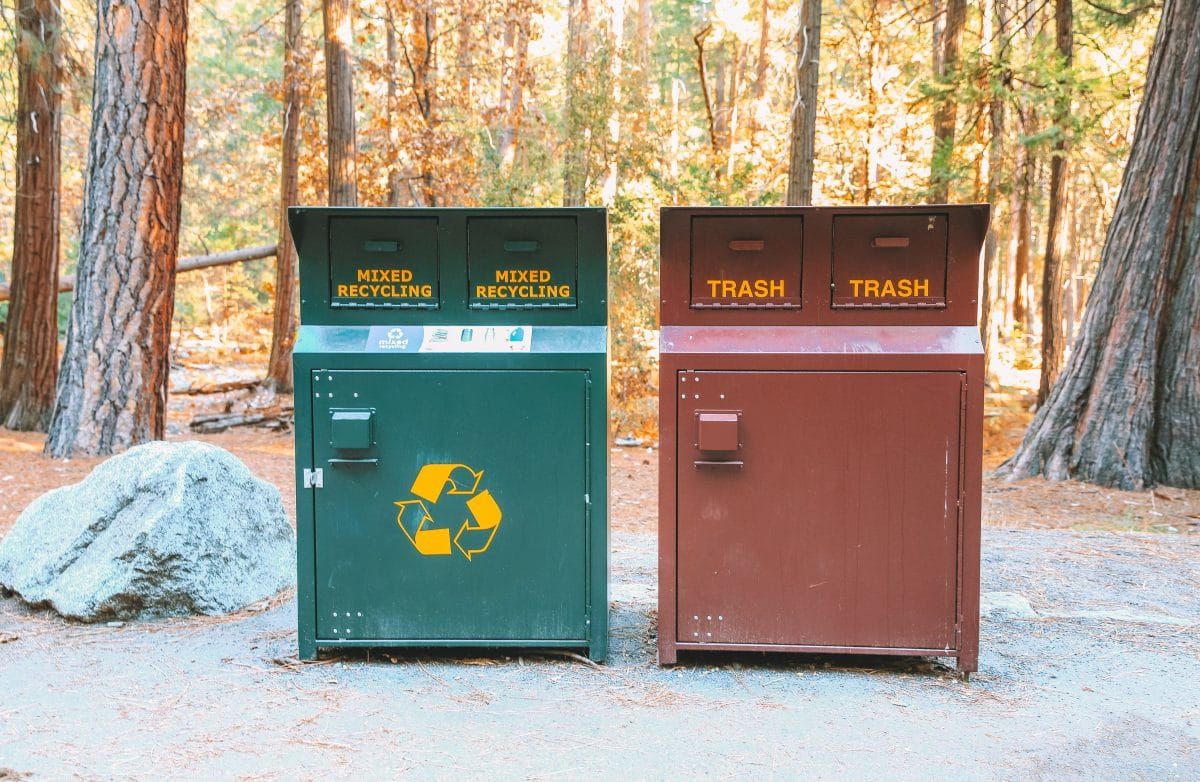
Remember, Yosemite National Park is a special place that deserves respect.
When it comes to events that draw large crowds, each visitor must take care to minimize their impact on the park.
Don’t Enter Closed Areas
Inevitably, with crowds of people comes trampled, disturbed, or destroyed meadows or vegetation.
It may seem obvious but always look carefully for “closed area” signs. Sometimes signs have been in place for so long they may not stand out well.
Some areas that are specially marked off during Firefall are on the banks of the Merced River.
In years past,, so many people have stood on these delicate spots that the banks have collapsed, so please don’t do the same.
One way to protect Yosemite’s natural resources is to be sure to stand on a paved surface during your visit.
If you can’t find a paved spot, a spot with a deep snowpack is the next best to stand on.
Don’t Bring a Drone
As epic as the footage *would* be, Firefall is not a good time to set your drone aloft.
Drones are not allowed by the National Park Service in Yosemite for several reasons.
The biggest reason is that they interfere with the emergency use of rescue and medical helicopters. If a drone is spotted, then the helicopter can’t take off.
Leave the Pupper at Home
Given the large crowds, the long waiting time, and the fact that Yosemite does not allow dogs anywhere but roads and sidewalks, Firefall is not the best time to take a vacay with your dog.
Leave it Better Than You Found it
I know it’s happened to me: I reach in my pocket and find my mask has slipped out or that granola bar wrapper is suddenly gone.
With so many visitors, the park might inevitably look a little trashy!
Always make sure you pack out all of your trash when you leave, and if you feel like lending a hand, pick up any other trash you see lying around.
Get your FREE California Travel Planner – including printable checklists and my favorite two-week itinerary for the state.
ABOUT THE AUTHOR
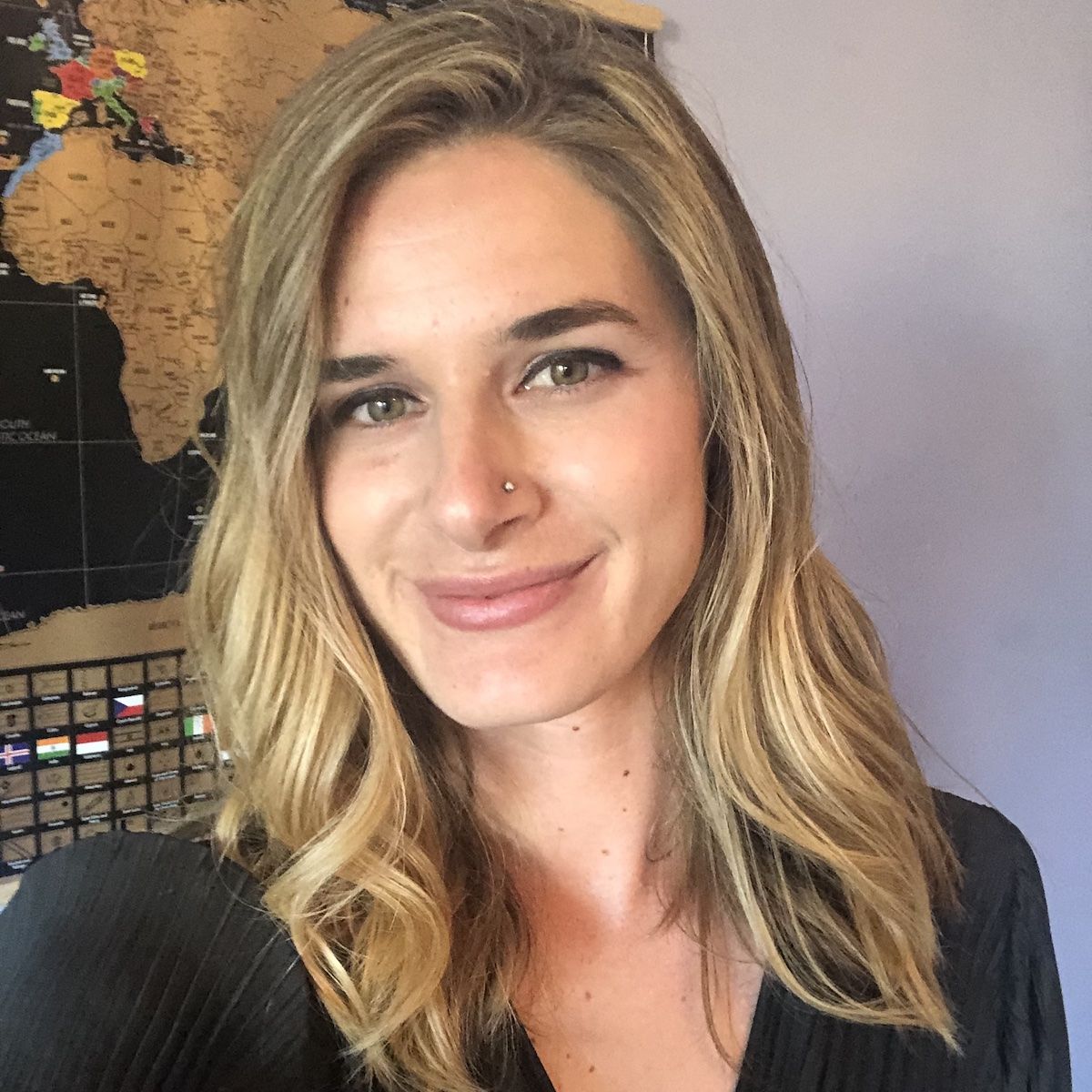
Mimi McFadden
Founder & Editor-In-Chief
Mimi McFadden initially started The Atlas Heart in 2013 to write about her adventures abroad. But since 2019, The Atlas Heart has become a love letter to the Golden State. Mimi enjoys sharing her first-hand knowledge and expertise with the places she knows so well and making the most comprehensive travel guides possible. When she’s not hiking and exploring new places in California, she loves to travel abroad, read in her cozy chaise lounge, play basketball, and connect with friends and family over board games. Over her 28 years in California, she has lived in Santa Cruz (18 years), San Diego (5 years), and the San Francisco Bay Area (5 years), where she currently resides.
Looking for more California and national parks travel inspiration? Check out my related posts below!
Epic California National Parks Road Trip
National Parks in California: The Complete Guide to All 9 Parks
Things to do in Death Valley National Park
Palm Springs to Joshua Tree National Park
Best Joshua Tree Hotels, Airbnbs & Campsites
California State Parks List (Every Park Organized by County)
Pin this image for future reference

